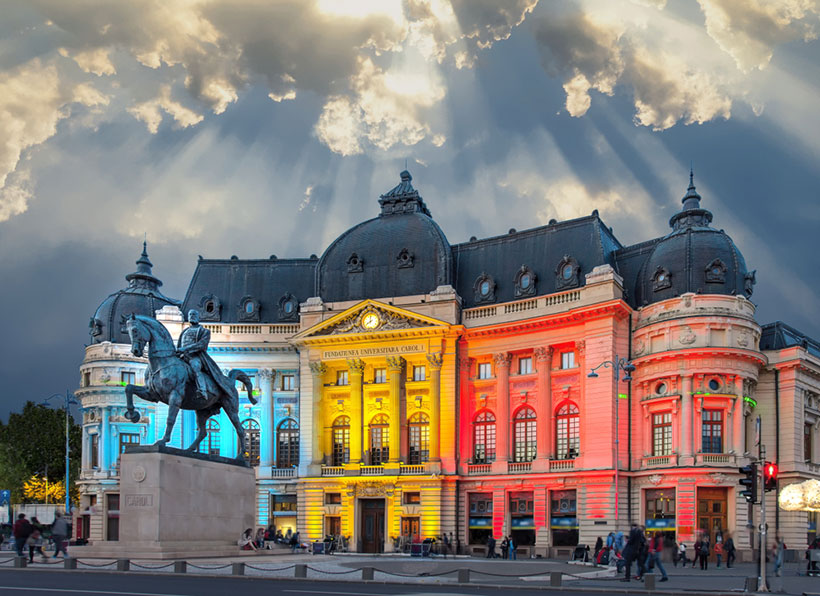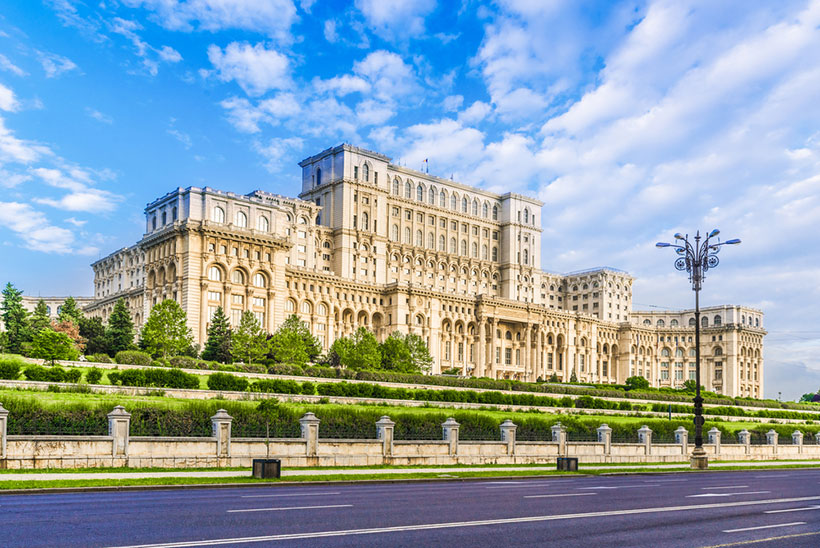Romania’s capital - Bucharest
The Romanian capital is a happy combination of its past eras: it breathes the bohemian perfume of Paris, boasts edifices of modern architecture, including remnants of its former communist regime (1945-1989) and is developing the attributes of a metropolis. The story of what was once called the Little Paris of Eastern Europe rings in your ears from the moment you land at the international airport named after Henri Coanda, the great Romanian inventor, born in Bucharest, whose mother was of French origin. While Coanda invented, in Paris, the first jet propulsion aircraft (1910), in Bucharest, French architects created Little Paris.
After passing the Arch of Triumph and the Kiseleff Road, landmarks that remind you of the French capital, you remain surprised by the series of monumental Belle Epoque style buildings, which are scattered throughout the city, but especially on Victoria Avenue. This route is among the oldest in town. A leisurely walk on foot, on Victoria Avenue brings you the impressive elegance of buildings like the Cantacuzino Palace – the nowadays George Enescu Museum, CEC Palace – National Savings Bank branch, cool bars with terraces and the shop fronts of famous companies. Victoria Avenue ends its route at the meeting point with the Dâmbovița River, the river that runs through the capital. Not far away, the Palace of Parliament makes its appearance. In front of it, Unirii Boulevard and the square of the same name open out. Face to face, two eras speak to each other, because here you can find Manuc’s Inn, a building screening the entrance to the Old Town. On streets that seem to be gathered for a ball, you can find a land of paradoxes.
Vibrant bars and clubs, elegant restaurants, chic cafes and lots of people always willing to have fun, but also some of the most important churches in the city. Visit the Princely Church of the Old Court, the oldest church in Bucharest, founded in its early form by the Romanian ruler, Mircea Ciobanu during the mid-XVI century and the exceptionally decorated (Brâncoveanu style) Stavropoleos church. The city catches your attention with its buildings, but breathes through its parks.
Herastrau is the most extensive, disposed on the natural lakeside with the same name. In the heart of the capital you can find the green oasis of Cismigiu, the city’s oldest public garden, with varied vegetation, landscape and an artificial lake, which, in winter becomes a skating rink. The Carol I park, located on a hill once covered by vineyards, is dominated by the huge mausoleum dedicated to the heroes of our Motherland.
The city will captivate the attentive and open-minded, traveler who is open to see and feel; a new face with every change of light, from sunrise to sunset and again at dawn, brought on by the gathering in of eras of history.


